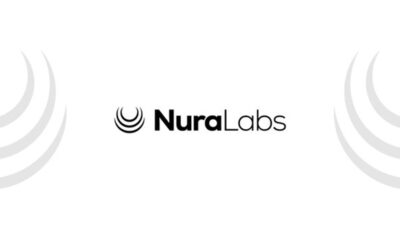Canada News
Are nurse strikes a tipping point to the workforce revolution in the healthcare industry?

Are nurse strikes a tipping point to the workforce revolution in the healthcare industry?
There have been over a dozen healthcare strikes in 2023 so far. Nurses have been key actors in these strikes, citing a critical need for better pay and benefits, lighter patient loads and safer work environments.
History of strikes in healthcare
Throughout the history of the United States, healthcare strikes have played a pivotal role in highlighting challenges faced by healthcare professionals and advocating for better working conditions and patient care. Starting in the 20th century, as medical facilities and systems grew more complex, healthcare workers, including nurses, doctors, and ancillary staff, organized and participated in strikes to draw attention to various issues. One notable period was the 1960s and 1970s, during which there was a surge in unionization and strikes as nurses and other healthcare professionals sought improved wages, working conditions, and staffing ratios. The emphasis was often on ensuring that patient care was not compromised due to overwork or understaffing. While healthcare strikes have sometimes been contentious, given the critical nature of medical services, they have also resulted in important reforms and agreements that have shaped the modern healthcare landscape. As with any strike in vital industries, the goal is often a balance between advocating for workers’ rights and ensuring public safety.
Understanding the strikes of today
These strikes demonstrate a growing issue in the healthcare industry; one where workers are realizing that they have the power to demand change through collective action. Healthcare providers are overworked, taking on more patients than is safe. California is the only state that has legally defined required minimum nurse-to-patient ratios to be maintained at all times by unit, meaning other states are not ensuring that balance, which can lead to more medical errors and a decrease in the quality of care patients receive overall.
Among other issues include compensation, contract negotiations and concerns over professional autonomy, ongoing training, job security and other motivational factors that are backing healthcare providers into a corner, and now many are striking.
The ones leading the pack are nurses.
“When most lay people think about healthcare, they mistakenly think of doctors as the center of the care delivery process. But in reality, physicians only make up about 8% of our clinical workforce. Nurses make up the majority with a more than 80% share of the workforce. This gives nurses enormous power to demand change through collective actions like strikes and unionization. The changes nurses are negotiating through these strikes are changes that will improve conditions for everyone in healthcare, including patients,” explains DoorSpace CEO Sarah M. Worthy.
Moving forward
In 2021, only 13.2% of healthcare workers were unionized, a percentage that hasn’t changed much in the past decade. However, major healthcare labor groups say they are seeing increased interest in union representation from clinicians. National Nurses United, with nearly 225,000 members nationwide, is the largest union and professional association of registered nurses in U.S. history. A growth of more unions or collective action could be in the near future as a response to the decades of healthcare providers feeling overworked and burnt out.
In 2009, the California Nurses Association/National Nurses Organizing Committee played a lead role in bringing state nursing associations across the nation together into one national organization, National Nurses United (NNU). At its founding convention, NNU adopted a call for action to counter the national assault by the healthcare industry on patient care conditions and standards for nurses, and to promote a unified vision of collective action for nurses.
Only time will tell if strikes prove effective at reducing the problems plaguing the healthcare industry in the United States. With more providers leaving the industry and with increasing rates of turnover, many argue that the industry is in need of a significant overhaul.
About DoorSpace
Based in Houston, Texas, DoorSpace is delivering cutting-edge talent development software through its innovative, cloud-based platform. With a people-centric approach that helps healthcare professionals focus on what matters most – their patients and themselves – DoorSpace is changing the game. By seamlessly integrating personnel, administration monitoring, and organization systems, they’re streamlining healthcare processes and helping organizations retain and develop clinical talent. DoorSpace is all about making work better for the people who make a real difference.
-

 Press Release3 days ago
Press Release3 days agoNura Labs Files Revolutionary Patent: AI-Powered Wallet Solves the $180 Billion Crypto Staking Complexity Crisis
-

 Press Release1 day ago
Press Release1 day agoGlobal Compound Feeds and Additives Industry Report: Market Expansion and Competitive Insights to 2035
-

 Technology1 day ago
Technology1 day agoWhat to Know Before Switching Cell Phone Network Services in 2025















